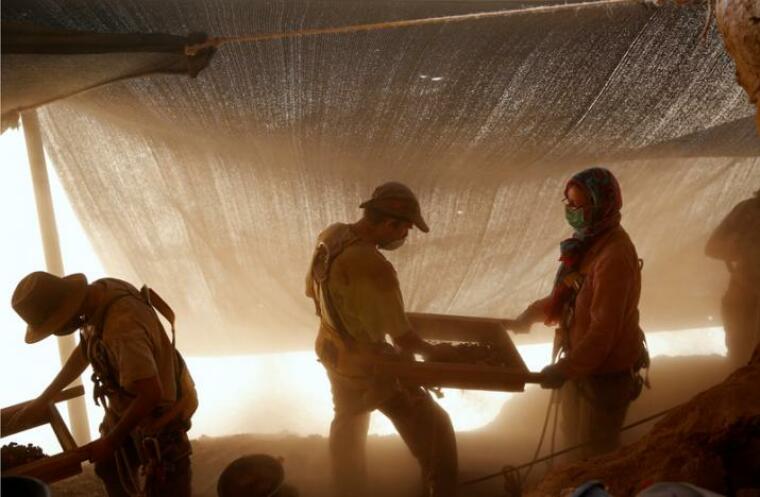Israeli archaeologists uncover evidence confirming destruction of idols by King Hezekiah

Israeli archaeologists have discovered evidence in Tel Lachish National Park that confirms the abolition of idol worship by King Hezekiah as recorded in II Kings.
The Israel Antiquities Authority found a gate-shrine from the First Temple period which is believed to be around eighth century B.C. Archaeologists believe that the discovery corresponds to the verses in the II Kings 18, which partly states, "He removed the high places and broke the pillars and cut down the Asherah."
The archaeologists said the gate, which is the largest known from the First Temple period, fits with the current historical and archaeological knowledge. The Bible describes the city gates as a place where the elders, judges, governors, kings and officials sat on benches.
"These benches were found in our excavation," said excavation director Sa'ar Ganor.
In an interview with Christian Today, Ganor stated that the gate is where everything, including administrative and cultic activities, took place.
The archaeologists have also found altars with horns that were truncated which Ganor considers as evidence of the religious reforms imposed by Hezekiah. Aside from the truncated horns, a stone in the shape of a chair with a hole at the center was found in a room. The chair was believed to be a toilet that is meant to desecrate the place to render the shrine unusable.
The discovery conforms to II Kings 10:27 which states, "And they demolished the pillar of Baʽal, and demolished the house of Baʽal, and made it a latrine to this day."
Laboratory findings indicate that the toilets were never used.
Ze'ev Elkin, the Minister of Jerusalem and Heritage and Environmental Protection, expressed his appreciation for the new discovery.
He stated: "The fascinating new discovery at Tel Lachish is a typical example whereby excavations and further research of heritage sites show us time and time again how biblical tales that are known to us become historical and archaeological stories. ... Before our very eyes these new finds become the biblical verses themselves and speak in their voice."
Other items found at the site include benches with armrests, jars, scoops for loading grain and stamped jar handles. The seal impressions on the handles indicate that the jars belong to the king of Hebron.
 Christians don't have to affirm transgenderism, but they can’t express that view at work: tribunal
Christians don't have to affirm transgenderism, but they can’t express that view at work: tribunal Archaeology discovery: Medieval Christian prayer beads found on Holy Island
Archaeology discovery: Medieval Christian prayer beads found on Holy Island Presbyterian Church in America votes to leave National Association of Evangelicals
Presbyterian Church in America votes to leave National Association of Evangelicals Over 50 killed in 'vile and satanic' attack at Nigerian church on Pentecost Sunday
Over 50 killed in 'vile and satanic' attack at Nigerian church on Pentecost Sunday Ukrainian Orthodox Church severs ties with Moscow over Patriarch Kirill's support for Putin's war
Ukrainian Orthodox Church severs ties with Moscow over Patriarch Kirill's support for Putin's war Islamic State kills 20 Nigerian Christians as revenge for US airstrike
Islamic State kills 20 Nigerian Christians as revenge for US airstrike Man who served 33 years in prison for murder leads inmates to Christ
Man who served 33 years in prison for murder leads inmates to Christ


 Nigerian student beaten to death, body burned over ‘blasphemous’ WhatsApp message
Nigerian student beaten to death, body burned over ‘blasphemous’ WhatsApp message 'A new low': World reacts after Hong Kong arrests 90-year-old Cardinal Joseph Zen
'A new low': World reacts after Hong Kong arrests 90-year-old Cardinal Joseph Zen Iran sentences Christian man to 10 years in prison for hosting house church worship gathering
Iran sentences Christian man to 10 years in prison for hosting house church worship gathering French Guyana: Pastor shot dead, church set on fire after meeting delegation of Evangelicals
French Guyana: Pastor shot dead, church set on fire after meeting delegation of Evangelicals ‘Talking Jesus’ report finds only 6% of UK adults identify as practicing Christians
‘Talking Jesus’ report finds only 6% of UK adults identify as practicing Christians Mission Eurasia ministry center blown up in Ukraine, hundreds of Bibles destroyed: 'God will provide'
Mission Eurasia ministry center blown up in Ukraine, hundreds of Bibles destroyed: 'God will provide' Church holds service for first time after ISIS desecrated it 8 years ago
Church holds service for first time after ISIS desecrated it 8 years ago Burger King apologizes for 'offensive campaign' using Jesus' words at the Last Supper
Burger King apologizes for 'offensive campaign' using Jesus' words at the Last Supper Uganda: Muslims abduct teacher, burn him inside mosque for praying in Christ’s name
Uganda: Muslims abduct teacher, burn him inside mosque for praying in Christ’s name